#Niche selection in e-commerce
Explore tagged Tumblr posts
Text
How to Start Dropshipping with EPROLO: A Beginner's Guide
Are you interested in starting your own online business? The dropshipping industry offers an exciting opportunity to do just that, and EPROLO is here to help you every step of the way!
First, let's talk about what dropshipping is. Dropshipping is a retail fulfillment method where a store doesn't keep the products it sells in stock. Instead, when you sell a product, you purchase the item from a third party and have it shipped directly to the customer. This means you don't have to worry about inventory management or shipping logistics, allowing you to focus on growing your business.
Now, how to start dropshipping with EPROLO? Here are some easy steps to get you going:
Create Your EPROLO Account: Sign up for an EPROLO account to access a wide range of products that you can sell. The platform is user-friendly, making it simple for beginners.
Choose Your Niche: Selecting a niche is crucial for your dropshipping success. Think about what products you are passionate about or what trends are currently popular. EPROLO offers a variety of categories to choose from.
Set Up Your Online Store: You can create your online store using platforms like Shopify or WooCommerce. EPROLO integrates seamlessly with these platforms, making it easy to manage your orders and products.
Import Products: Browse EPROLO’s extensive catalog and import products directly to your online store. You can customize product details and pricing to fit your brand.
Market Your Store: Once your store is set up, it’s time to attract customers! Use social media marketing, search engine optimization (SEO), and online advertising to promote your store and drive traffic.
Process Orders: When a customer places an order on your site, you can easily fulfill it through EPROLO. Simply place the order on their platform, and they will handle the shipping directly to your customer.
Provide Excellent Customer Service: Building a loyal customer base is essential. Respond promptly to inquiries and ensure your customers have a positive shopping experience.
Starting a dropshipping business with EPROLO is a fantastic way to enter the e-commerce space without the burden of managing inventory. With dedication and the right strategies, you can turn your dropshipping venture into a successful online business. Happy selling!
#social media#niche selection#dropshipping#e-commerce#retail fulfillment#EPROLO#SEO#inventory management
0 notes
Text
Top Tips for Succeeding in the Dropshipping Industry
The dropshipping industry is thriving, and there's never been a better time to dive in! With the rise of e-commerce, entrepreneurs have the opportunity to build successful businesses without the need for inventory. One brand that stands out in the dropshipping suppliers market is EPROLO.
EPROLO offers a seamless solution for those looking to start their dropshipping journey. Their platform is user-friendly, making it easy to find and import products into your online store. Plus, they provide excellent shipping services, ensuring that your customers receive their orders promptly.
If you're considering starting a dropshipping business, here are a few tips to get you started:
Choose the Right Niche: Focus on a niche that interests you and has a demand in the market. Research trending products and analyze your competition.
Leverage Reliable Suppliers: Partnering with trustworthy suppliers like EPROLO is crucial. They help ensure quality products and timely delivery, enhancing customer satisfaction.
Optimize Your Online Store: Make your store visually appealing and user-friendly. Invest time in creating engaging product descriptions and high-quality images.
Market Effectively: Utilize social media, SEO, and email marketing to reach your target audience. Building a strong online presence will help drive traffic to your store.
Provide Excellent Customer Service: Happy customers are repeat customers. Be responsive to inquiries and resolve any issues promptly.
By following these tips and utilizing the resources available through EPROLO, you can set yourself up for success in the exciting world of dropshipping. Good luck!
0 notes
Text
WooCommerce Dropshipping: Building Your Online Store Hassle-Free"
WooCommerce, a popular e-commerce platform built on WordPress, offers a versatile and customizable solution for entrepreneurs looking to start and grow their online businesses. When combined with dropshipping, WooCommerce enables entrepreneurs to create an efficient and scalable e-commerce operation without the need to hold inventory. Here’s a comprehensive overview of WooCommerce dropshipping:1.…
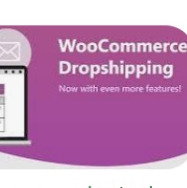
View On WordPress
#Analytics#Customer Service#Digital Marketing#Dropshipping#E-commerce#Entrepreneurship#Marketing Strategy#Niche Targeting#Online Store#Optimization#Product Selection#Product Sourcing#Supplier Relations#WooCommerce#WordPress
0 notes
Text
What is a Website? A Complete Beginner’s Guide

In today’s digital age, having an online presence is not a luxury — it’s a necessity. Whether you're a business owner, content creator, or just someone curious about the web, understanding what a website is and how it functions is essential. In this guide, we’ll cover everything you need to know about websites, their components, types, benefits, and how to create one.
What is a Website?
A website is a collection of publicly accessible web pages that are linked together and share a single domain name. These pages are hosted on a web server and can include text, images, videos, forms, and other elements that users interact with online.
In simpler terms, a website is your virtual space on the internet — like your home or office in the digital world. It allows you to communicate, sell, educate, entertain, or showcase anything to a global audience.
Why is a Website Important Today?
In a world dominated by smartphones, search engines, and social media, a website acts as your central hub online. Here's why it’s important:
Visibility: A website helps you appear in search results when people look for your products, services, or information.
Credibility: A professional-looking site builds trust among your audience.
Accessibility: Your website is available 24/7, allowing customers to reach you anytime.
Marketing: It's the foundation for all your digital marketing efforts.
Sales: With e-commerce, your website can directly generate revenue.
Core Components of a Website
Every website has several key components that make it function properly:
1. Domain Name
This is your site’s address (e.g., www.digitalcreator.org.in). It’s what users type in their browser to visit your site.
2. Hosting Server
Web hosting stores your website’s data and serves it to users when requested.
3. Content Management System (CMS)
A CMS like WordPress, Joomla, or Shopify makes it easy to build and manage content on your website without coding.
4. Web Pages
These include the homepage, about us, contact, services, blog, etc., that make up your website.
5. Navigation
Menus and internal links guide visitors through your website.
Types of Websites
Different websites serve different purposes. Here are some common types:
1. Business Website
Used by companies to promote services, share information, and connect with clients.
2. E-commerce Website
Allows users to buy and sell products online. Examples include Amazon and Flipkart.
3. Portfolio Website
Ideal for creative professionals to showcase their work.
4. Blog or Personal Website
Used by individuals to share ideas, stories, or niche content regularly.
5. Educational Website
Used by schools, institutions, or educators to provide learning materials.
6. Non-profit or Government Website
Focused on delivering information and services to the public.
How to Create a Website (Step-by-Step)
Creating a website doesn’t require you to be a tech expert. Follow these steps:
Step 1: Choose a Domain Name
Pick a short, relevant, and memorable domain name. Make sure it reflects your brand or purpose.
Step 2: Get Web Hosting
Choose a reliable hosting provider like Bluehost, SiteGround, or Hostinger.
Step 3: Select a CMS or Website Builder
Use platforms like WordPress, Wix, or Shopify to start building your website.
Step 4: Design Your Website
Choose a theme or template. Customize colors, fonts, and layout to match your brand.
Step 5: Add Content
Create and publish pages like Home, About, Services, and Contact. Use quality visuals and optimized text.
Step 6: Optimize for SEO
Use keywords (like website) naturally, optimize images, and ensure fast load speed.
Step 7: Launch and Promote
Once satisfied, make your website live. Share it on social media and start your SEO or ad campaigns.
Best Practices for a Great Website
Responsive Design: Ensure your site works well on all devices.
Fast Loading Speed: Use compressed images and optimized code.
Clear Navigation: Make it easy for users to find what they need.
Secure (HTTPS): Use an SSL certificate to protect data.
Call-to-Action (CTA): Guide visitors toward actions like “Buy Now” or “Contact Us.”
Examples of Great Websites
A well-designed and fully functional example is www.digitalcreator.org.in. It demonstrates how a website can showcase services, build trust, and attract new clients efficiently.
LSI Keywords to Keep in Mind
While writing or optimizing your website, include these Latent Semantic Indexing (LSI) keywords to enhance search performance:
Web design
Online presence
Website development
Internet site
Web page
Digital platform
Domain and hosting
CMS (Content Management System)
Website builder
E-commerce site
Frequently Asked Questions (FAQs)
1. What is the purpose of a website?
A website helps individuals or businesses share information, sell products, provide services, or connect with others online.
2. How much does it cost to build a website?
Costs vary based on design, features, and hosting. Basic websites can cost as low as ₹3,000–₹10,000, while advanced ones may go up to ₹1 lakh or more.
3. Do I need coding skills to create a website?
No. Tools like WordPress or Wix allow you to build a full website without writing any code.
4. How long does it take to build a website?
A simple website can be built in 1–2 days. More complex sites may take a few weeks.
5. What makes a website successful?
A successful website is user-friendly, fast, mobile-optimized, secure, and offers valuable content with clear calls-to-action.
Conclusion
Understanding what a website is is the first step toward establishing your digital footprint. Whether you're planning to launch a personal blog, online store, or professional portfolio, your website will serve as the foundation of your online presence.
If you're ready to build or improve your website, visit www.digitalcreator.org.in — your one-stop destination for digital marketing and website development solutions.
2 notes
·
View notes
Text
Basic Steps to Build Your Shopify Website — Softhunters

Shopify makes it effortless to set up an e-commerce website. Even a novice user can accomplish it in parts. Shopify is because of its friendly design coupled with powerful features; Shopify is one of the most widely used e-commerce platforms by both small and large businesses. Some of the services they offer include customizable online store templates and effective payment gateways. Shopify website design company can create a strong online presence if they sell tangible products, services, or even digital items.
Read More :- https://softhunters.in/basic-steps-to-build-your-shopify-website/
The Shopify store is simple to use, allowing you to run your business without requiring extensive technical knowledge. This blog post will enumerate the fundamentals of creating a Shopify website.
Creating a Shopify Account
The first step in growing your Shopify store is to create an account. To try this, visit Shopify.com and click on the “Start free trial” button in the top right corner. Then, offer your e-mail address, password, and store name.
The store name will initially function as your number one domain. After developing your account, Shopify will ask you some questions about your business. Fill these out and click on “Enter my store” to proceed. This initial setup system is designed to be short and clean, allowing you to begin building your savings properly away.
Establishing Your Shopify Store
Once you have got your account installation, it is time to configure your keep settings. Access the menu on the left aspect of your Shopify dashboard, which incorporates hyperlinks to all of your save gear and features. Use the settings button at the left to set your keep name, time quarter, forex, and other number one settings.
This step is essential as it inspires the way your shop operates and how clients will perceive it. Make certain all information is correct to ensure easy operations and compliance with local regulations.
Selecting A Theme
Your themes control the presence and design of your site. To select a theme, go to the “online store” in the sales channel in the left sidebar, and then select the theme “Theme.” Some free themes are available for your use in Shopify, and you can also visit the theme stores for the paid ones.
Choose a theme that fits your brand and niche. Check reviews to determine if they can serve your goals and be supported by any additional features you want to integrate in the future. The subject should appeal to the eyes and provide an excellent user experience to maintain customers.
Including Products and Services
Now that your store displays as you want it to, it has time to populate it with your products. Return to the Shopify Admin Dashboard. On the Left Menu, click “Product.” To upload a product, click “Add the Product”. You can include the title, description, price, images, and additional details per product.
Ensure to categorize your products using collections or categories for easy visibility. This is essential as it will directly impact your sales and customer satisfaction.
Be sure to detail product descriptions and use high-quality images so buyers can make quality purchasing decisions.
Personalize Your Theme
Once you have chosen a theme, you may use it to represent your brand in a more customized manner. To try this, click on the “Online Store” tab, after which, at the theme you have selected, hover over it and click “Customize.” From the left-hand equipment inside the editor, you can regulate hues, fonts, and layouts. You also can add or delete sections.
Customization is crucial to making your save stand out and mirror your emblem identification. Ensure that your design stays consistent on all pages so that you can give it an expert touch.
Pages Setup and Content Preparation
You can create additional pages for your website, furthermore, your products. The same applies to the ‘Contact’ and ‘FAQ’ pages — a setup guide and live builder are available. For sharing more details regarding your brand or products, blogs can assist you in promoting the business and help in audience engagement. Also, every content must be created in a manner that makes the customer confident and loyal towards the brand.
Instructions for Setting Up Payment Options
If you want to sell, you need to select a payment option first. Under Settings or Setup Guide, scroll to Payment. Log into your cash account and choose Shopify payment or any other provider if you wish to use PayPal.This is essential to ensure the payment setup works properly and securely. It also determines whether you can process transactions and get paid directly.
Sourcing Suppliers and Additional Funding
Reexamine yourself. What is the profile of the partner you want to work with? In what manner do you intend to work with them? When looking to outsource, do not run away from your network. Existing contacts are the best place to start with a Shopify web development Agency. Easy deals and fewer problems are sometimes discovered just one step away.
Additionally, analyze what you can do within a certain budget. Let’s take a more realistic view to ensure you can achieve practical things and trace the path to interesting opportunities within a budget.
Additional Suggestions for Achieving Success
The following tips can aid in improving your Shopify store.
Establish A Brand Style Guide
Create a general style guide rule document comprising typography, color scheme, and logo style for your brand before commencing the designing of your website. This will help in maintaining said standards throughout your site and marketing resources.
Think About Store Layout
Always keep in mind customer trust, aesthetics, and mobile devices when it comes to modern e-commerce design principles. Launch with a minimum viable product (MVP) and refine through the feedback of your customers.
Make Use of Shopify Apps
There is a suite of apps available within Shopify that can assist in improving features within your store. Consider apps that can enhance customer satisfaction, bot automation, and revenue generation.
Blogging on The Shopify platform
Shopify enables users to store blog posts so that pre-approved content can be designed and managed within the store. This could generate traffic and keep customers engaged.
Conclusion
The process of building a Shopify store is a straightforward one and can be achieved in various stages. With these tips and regular improvements in your store, you can make a successful online presence and build your business accordingly.
Always pay attention to the identity of your brand and the experience of customers for long-term success. The best web development company is always present to provide you with all the support for your Shopify website.
#Shopify Website#Shopify Website Design#Shopify Website Developer#Shopify Website Builder#Shopify Website Designer
2 notes
·
View notes
Text
A Comprehensive Guide to Accepting Credit Cards in High-Risk Industries
Article by Jonathan Bomser | CEO | Accept-Credit-Cards-Now.com

In the contemporary digital arena, integrating credit card acceptance is pivotal for business success, especially within high-risk industries. Whether steering an e-commerce venture, a credit repair service, or dealing in CBD products, mastering the intricacies of payment processing, merchant accounts, and credit card payment gateways is paramount. This comprehensive guide aims to navigate the complexities of accepting credit cards in high-risk sectors, offering valuable insights and strategic approaches to adeptly maneuver this challenging terrain.
DOWNLOAD THE A COMPREHENSIVE GUIDE TO ACCEPTING INFOGRAPHIC HERE
Payment Processing Dynamics for High-Risk Sectors
Industries deemed high-risk, including credit repair and CBD products, encounter unique challenges in the realm of payment processing. This segment scrutinizes the specific considerations and solutions requisite for securely and efficiently managing payment transactions within these niches. Various payment processing options will be dissected, shedding light on their applicability to diverse high-risk businesses.
Decoding Merchant Accounts
Merchant accounts serve as the bedrock of credit card acceptance. This section elucidates the essence of merchant accounts, their pivotal role in high-risk industries, and guides on selecting the most fitting option for your business. The application process, approval criteria, and an overview of the initiation of a high-risk merchant account will be demystified.
Credit Card Payment Gateways Tailored for High-Risk Enterprises
A resilient payment gateway is indispensable for the seamless processing of credit card payments online. This segment delves into the intricacies of payment gateways within high-risk industries, exploring their attributes, integration possibilities, and security protocols. Additionally, insights will be provided on optimizing your payment gateway to ensure a frictionless transaction experience.
E-Commerce Payment Processing Protocols in High-Risk Niches
E-commerce entities operating in high-risk industries confront added challenges in the realm of payment processing. This section will unravel the specific prerequisites for e-commerce payment processing, encompassing the pivotal roles of payment gateways and merchant accounts. Strategies to elevate user experience and fortify security measures will also be scrutinized.
youtube
Navigating Credit Card Acceptance for CBD and Credit Repair
Two burgeoning high-risk sectors, CBD products, and credit repair services, warrant specialized attention in terms of payment processing. This section will furnish insights into the distinctive payment processing requirements of these industries. From delving into CBD merchant accounts to dissecting credit repair payment processing intricacies, businesses can glean valuable information to serve their customers adeptly.
The acceptance of credit cards within high-risk industries necessitates a nuanced comprehension of the distinctive challenges and bespoke solutions available. Whether in e-commerce payment processing, credit repair, or CBD merchant services, tailored options abound to ensure businesses can securely and effectively embrace credit card payments. Opting for a payment processor well-versed in high-risk merchant processing sets the stage for providing customers with a payment experience that seamlessly combines security and convenience.
#high risk merchant account#payment processing#credit card processing#high risk payment gateway#accept credit cards#high risk payment processing#credit card payment#merchant processing#payment#youtube#Youtube
19 notes
·
View notes
Text
How to Set Up a Dropshipping Store: A Step-By-Step Guide with Real Examples
Whether you’re a seasoned e-commerce veteran or a newbie looking to dive into the world of online retail, dropshipping offers a low-risk, high-reward way to start a business. In this guide, I’ll walk you through the entire process of setting up a dropshipping store, using real examples of dropshipping sites to provide context and inspiration. Step 1: Market Research and Niche Selection Real…

View On WordPress
#business#dropshipping#guide#how to#make money#marketing#online marketing#online store#Small Business#Work From Home
19 notes
·
View notes
Text
Michael Esposito Staten Island E-commerce Excellence: Strategies for Effective Influencer Marketing
In the fast-paced world of e-commerce, the role of influencer marketing has emerged as a game-changer. With the power to drive brand visibility, engagement, and sales, influencer marketing has become an indispensable strategy for e-commerce businesses looking to thrive in a competitive digital landscape. In this article, Michael Esposito Staten Island - Strategies for Effective Influencer Marketing, we delve into the strategies that can elevate your influencer marketing efforts and propel your e-commerce business to new heights of success.

The Power of Influencer Marketing in E-commerce
Influencer marketing has established itself as a powerful catalyst in the e-commerce industry. By leveraging the reach and credibility of influencers, brands can connect with their target audience in a more authentic and impactful way. With the right influencer partnerships, e-commerce businesses can amplify their brand message, build trust, and drive conversions. However, to harness the full potential of influencer marketing, a strategic approach is essential.
Crafting Compelling Content and Storytelling
One of the key strategies for effective influencer marketing in e-commerce is the creation of compelling content and storytelling. Influencers have the ability to craft engaging narratives that resonate with their followers. By aligning your brand message with the influencer's authentic storytelling, you can create content that captivates the audience and drives them to take action. Whether it's through visually appealing posts, engaging videos, or genuine product reviews, compelling content is the cornerstone of successful influencer marketing campaigns.
Authenticity and Relevance in Influencer Selection
The effectiveness of influencer marketing in e-commerce is largely dependent on the authenticity and relevance of the influencers involved. It's crucial to choose influencers whose values, niche, and audience align well with your brand. Authentic endorsements build trust, and when influencers genuinely support your products or services, their recommendations have a strong impact on their followers. By thoughtfully selecting influencers who naturally fit your e-commerce brand, you can ensure your message authentically resonates with your target audience.
Data-Driven Partnership and Performance Metrics
In the digital age, data-driven decision-making is paramount. When it comes to influencer marketing in e-commerce, leveraging data and performance metrics is crucial for evaluating the success of campaigns. By tracking key performance indicators such as engagement rates, click-through rates, and conversion metrics, e-commerce businesses can gain valuable insights into the impact of their influencer partnerships. This data-driven approach allows for continuous optimization, ensuring that influencer marketing efforts deliver measurable results.
Cultivating Long-Term Relationships with Influencers
Building long-term relationships with influencers is a strategy that can yield substantial benefits for e-commerce brands. Cultivating long-term partnerships with influencers, rather than opting for one-off collaborations, can foster ongoing brand advocacy and loyalty. Long-term relationships enable influencers to become genuine brand ambassadors, investing in the brand's growth and success over time. This approach fosters authenticity and consistency, ultimately strengthening the bond between the brand, the influencer, and their audience.
Conclusion
In conclusion, effective influencer marketing is a cornerstone of e-commerce excellence. By implementing strategic approaches such as compelling content creation, authentic influencer selection, data-driven performance analysis, and long-term relationship cultivation, e-commerce businesses can unleash the full potential of influencer marketing to drive growth and success. As highlighted in Michael Esposito Staten Island Influence in the Digital Age: Who Are Today’s Most Powerful Brand Builders?, embracing these strategies will not only elevate brand visibility and engagement but also position your e-commerce business for sustained success in the dynamic digital landscape.
#michael esposito staten island#Influencer Marketing#Crafting Compelling#Influencer Selection#Performance Metrics
6 notes
·
View notes
Text
Make your customers happy with the best US-based Ecommerce supplier.
This game-changing service lets everyone (and anyone) – YOU included – enjoy running a US-targeted online business from the comfort of home.
Sellvia is a dropshipping supplier that provides a range of products, typically focusing on e-commerce entrepreneurs looking for a streamlined way to source items. Here are some key features that make Sellvia appealing:
Wide Product Range: They offer a diverse selection of products across various categories, making it easier to find items that fit your niche.
Fast Shipping: Sellvia emphasizes quick shipping times, often offering products from U.S. warehouses, which can lead to higher customer satisfaction.
Ready-to-Use Store: They provide a complete online store setup, making it easier for beginners to get started without technical know-how.
Automated Fulfillment: Sellvia automates the order fulfillment process, reducing the workload for dropshippers and allowing them to focus on marketing and customer service.
Marketing Support: They often offer marketing resources and tools to help sellers promote their stores effectively.
Competitive Pricing: With a focus on competitive pricing, Sellvia allows dropshippers to maintain healthy profit margins.
If you're considering using Sellvia, it's a good idea to explore their product offerings and read reviews from other users to ensure it aligns with your business goals. For more information, Visit our website: sellvia dropshipping
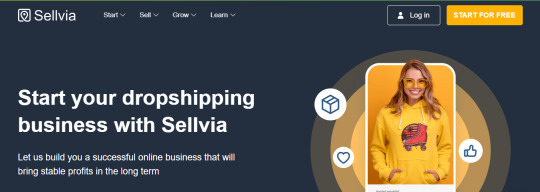
2 notes
·
View notes
Text
ClickAISites: Your Gateway to Effortless Online Selling

Powerful Features:
Create an Affiliate Store in 1 Click:
Build your ecom affiliate store on autopilot. Simply select the products from your desired niche, and let the software handle the rest.
Breathtaking Affiliate Sites:
Choose from over 50 complementary themes to create stunning, customizable e-commerce sites that attract massive traffic.
1-Click Import of Top-Selling Products:
Add high-demand products from Amazon with a single click. Access millions of products across thousands of niches.
Sell High-Quality Videos, Trainings, and More:
Beyond products, sell auto-generated trainings, videos, PLR products, and more to boost your conversions.
Automated Store Operations:
Automatically insert product names, generate content and images, update prices, and insert affiliate links. Manage multiple sites from a single dashboard.
WooCommerce Integration:
Seamlessly integrate with WooCommerce for efficient payments and smooth commission earnings.
Automated Product Management:
AI manages your products, variants, shipping, and coupons effortlessly.
Auto-Generated Blogs and Custom Pages:
Engage your audience and boost SEO with informative blog posts and custom pages created by our built-in AI.
SEO Optimization:
Improve your site’s ranking with meta keywords and descriptions to rank higher in search engines.
Mobile-Friendly Sites:
Ensure your affiliate sites are responsive and accessible from any device.
No Domain & Hosting Required:
We handle hosting and maintenance, with no monthly hosting fees or ongoing costs.
No Coding or Technical Expertise Needed:
Our AI develops websites with ease, so you don’t need to be a coder or hire one.
Start Your Own Agency:
With our unlimited commercial license, you can start a profitable agency and enjoy unprecedented profits.
100% Newbie Friendly:
Designed for beginners, anyone can use our platform.
Step-by-Step Training Included:
Access easy video tutorials and training materials to guide you through the process.
Cloud-Based Software:
Access your site from anywhere in the world on any device with a browser. No installation or updates needed.
30 Day Money Back Guarantee:
If we can’t solve your technical problems with ClickAiSite, just send us a message, and we’ll refund every penny. No questions asked.
>>>Get More Info
2 notes
·
View notes
Text
Oberlo Dropshipping: Streamlining Your E-commerce Success"
Oberlo has revolutionized the dropshipping industry by offering a seamless platform that integrates with e-commerce platforms like Shopify, making it easier than ever for entrepreneurs to start and scale their online businesses. With Oberlo, entrepreneurs can quickly import products from suppliers, customize their storefronts, and automate order fulfillment, allowing them to focus on growing…
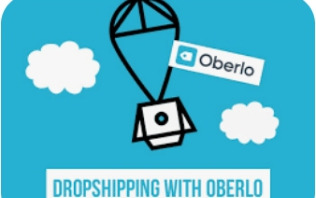
View On WordPress
#Analytics#Customer Service#Digital Marketing#Dropshipping#E-commerce#Entrepreneurship#Marketing Strategy#Niche Targeting#Oberlo#Online Business#Optimization#Product Selection#Product Sourcing#Shopify#Supplier Relations
0 notes
Text
Kickstart Your Fitness On How To Start a fitness Apparel Line: A Comprehensive Guide to Success

Launching a start-up fashion apparel business in the female fitness apparel niche is indeed a very engaging experience as it combines love for fitness clothing, fashion trends and, sports and business. The ultimate checklist to follow will help you to start the process of creating a profitable line of fitness wear.
Understanding of fitness clothing line

There are three main areas: choosing the best fabric for high performance, fabric weight, focusing on the stability, and adding in such things as the presence of moisture and breathing capability. Similarly everyday the athletic clothing line, the fitness clothing industry also top priority in terms of brand creation, market analysis, and marketing approach focused to the right demographic with keen interest in fitness and having a healthy lifestyle.
1. RESEARCH PLANNING

Understand the Market: Other recommendations include the following: Analyzing trends, target demographic, and players within the industry.
Choose Your Niche: To succeed in this competitive market, it is advisable to choose a niche, whether it is athleisure, performance wear, or sustainable materials.
Business Plan: Complete and submit the following plan as part of your proposal: plan: vision, goals, cost, and promotional plan.
2. PRODUCT DEVELOPMENT

Design Your Apparel: Other aspects of designs that needs to be taken into considerations include The purpose of the designs is to be unique that will appeal to the target audience.
Material Selection: Select materials of the highest quality that can resist wear and tear that often comes with many forms of physical training.
Prototype and Testing: Prototyping is the next step where one has to design and develop the prototypes of the concept and it is crucial to ensure that the gadgets created are functional, comfortable to wear and fashionable.
3. BRANDING AND IDENTITY

Brand Name and Logo: Namely, create a strong brand name and easily recognizable logo that would comply with the overall image of your brand.
Brand Story: Although a brand story does not necessarily identify neatly and distinctly with the audience, it is a building block by which you can create an emotional appeal as a way of communicating with the audience.
Brand Guidelines: It is imperative that what your brand represents on the Internet should resemble your offline brand image.
4. MANUFACTURING

Find a Manufacturer: Still using the example, try to research on the best manufacturer of the product that you would like to order within your set standard and financial capacity.
Sourcing Materials: Make sure that supplies of the chosen type of materials are constant.
Production Process: Supervise the manufacturing, or other processes, in order to ensure quality is not compromised.
5. LEGALITIES AND LICENSING

Business Structure: Decide on the right form of business to take (for example, LLC, sole proprietorship and others).
Licenses and Permits: The other important requirement includes; Securing the necessary business licenses and permits.
Trademark and Copyrights: Remember to safeguard your brand legally through the trademarks for the name, logo or any designs.
6. SETTING UP AN ONLINE PRESENCE

E-commerce Platform: Employ a friendly and easy to use e-business software to conduct your business with your customers.
Website Design: The need to create a website that is both attractive and easy to use cannot be overemphasized.
SEO and Content Marketing: Featured snippets must be implemented, and consistent development of content laced with SEO practices to accrue and maintain a loyal customer base should be the major goals.
7. MARKETING STRATEGY AND PROMOTION

Social Media Marketing: In this case, it is crucial to utilize social media platforms as a way of putting your brand out for people to see.
Influencer Collaborations: People follow the recommendations of their favorite personalities, especially in the online space, so use fitness influencers to advertise a new meal plan.
Email Marketing: In reference to the goal of increasing consumers’ purchases and maintaining their loyalty, it is vital to actively use e-mail campaigns to keep the target audience informed and involved.
8. LAUNCH AND GROWTH

Soft Launch: First, launch the product, specifically in a geographical location that will allow the research team to receive feedback before rebranding.
Official Launch: When your product is ready, ensure that it has a glamorous unveiling coupled with the promotions and campaigns.
Customer Feedback: Customers’ opinions can be heard through surveys, interviews or simply having them fill out a short questionnaire.
How Can You Choose the Suitable Fitness Clothing Manufacturer?
Choosing the right for fitness apparel brands and sports and fitness clothing brand by manufacturer involves several critical steps:
Research and Referrals

Always start your search online, and if you’re already connected to people in the fashion industry, ask for recommendations.
Evaluate Experience

In the case of sweaty gym and workout clothes made, the best manufacturers are those with specialization in manufacturing fitness apparel business apparels.
Check Quality Standards

Provide feedback on the quality control mechanisms used by the prospective suppliers and make sample demands.
Communication and Responsiveness

Guarantee that they are articulate and on the same page in terms of time.
Production Capacity and Flexibility

Check if they can fulfil your orders now and their ability to scale up for the future.
Cost and MOQs

You ought to compare costs and minimum order quantities (MOQs) that you will be willing to pay.
Ethical Practices

This means clothing manufacturers ensure that they adhere to the universally accepted ethical manufacturing standards.
FAQs

What is the first step in starting a fitness apparel line?
Ever before buying a product or designing one, a marketer needs to acquire some information in the niche market he intends to operate in.
How do I choose a niche for my fitness apparel line?
Keep it niche such as a sector, a category fitness clothing, or a material such casual clothing such as leisure-wear, sportswear, gym wear or eco-friendly material respectively.
What should be included in a business plan?
Describe your dream from day one, what you want to accomplish, how much money you will spend, solid business plan, how you will sell your product, and your business strategy and plan ROI.
How do I find a reliable manufacturer?
Research manufacturers, request samples, and assess their quality control, capacity, and ethical practices.
What legal requirements should I consider?
Choose a business model or structure to operate legally, Most legal business loans and structures require licenses and permits, and register a business name to safeguard your own business license and brand legally.
How can I build my brand identity?
It is also essential gym clothing brand to have a catchy brand name and logo that is geared towards attracting the intended audience to workout a fitness clothing line, as well as supporting them through a narrative.
What are the key elements of an online presence?
Establish an e-commerce site, create the storefront that consumers will want to frequent, and optimize the corporate website for search engine rankings.
How do I effectively market my fitness apparel line?
Get to market your own your own fitness clothing line, brand and products using social media marketing, brand association with influencers, e-mail marketing, and content quality.
Best advice to start a fitness clothing business
Allocation and the execution of goals and objectives, budget, sales and marketing strategies or the overall business plan is crucial. Brand your campaigns and target your audience through the proper use of social media, well-chosen influencers and online marketing. Marketing has to be properly developed, the web site has to be built in a way that it is easy to navigate, and contain optimized links that will bring buyers to the site. Remain open to change to stay in tune with emerging trends in the industry and target market, and with the opinion of the target customer to design better products and perform better business functions. Some of the tips involve; networking with professional industry players and looking for a mentor in the matter.
Conclusion
To sum up, it is crucial to outline the precise step-by-step plan when launching a fitness apparel line, from the accounting of the saturation in market and choice of the niche to creating the recognizable brand image. Hence, to create a niche fitness brand identity and carve out a space for itself within the cut-throat competition for quality fitness apparel and apparels, one must focus on quality fabrics, unique designs, and targeting the right consumer. And do not forget about using digital tools, addressing the audience through social networks, and being ready to adjust tactics according to tendencies and consumers’ responses. Fitness business or a new fitness clothing line or brand may sound a little blur, but if you are fully committed and employ adequate strategies, you can make a lot of money out of it such as workout clothes, gym apparel line and other new fitness clothing line and activewear manufacturers.
This would mean that undertaking this journey is more of a learning process and an experimentation process. It is crucial to remain connected with other professionals in the industry to be able to find support in the shape of a mentor, as well as always monitor the market situation to be able to manage on threats or even turn them into opportunities to sell workout clothes. To sustain the appreciation of the value these apparels have in the fitness industry or your own fitness clothing line or business and ensuring customer loyalty, one must strive to embrace a winning strategy that complies with the customer-oriented approach into your own fitness brand or fitness clothing line business.
#blog#clothing#fitnessapparel#business#fashion#clothing business idea#how to start a fitness apparel line
2 notes
·
View notes
Text
Dream Site Pro Review - Good or Bad?
In today’s digital age, having a strong online presence is not just an option, but a necessity. Whether you’re a small business owner, a freelancer, or an entrepreneur, your website is your digital storefront, the place where first impressions are made and lasting relationships are built. But let’s face it—building a professional, eye-catching website can be a daunting task, especially if you’re not a tech wizard. Enter Dream Site Pro, the game-changing platform designed to simplify website creation with the power of AI.
What is Dream Site Pro?
Dream Site Pro is a revolutionary AI-powered tool that allows anyone to create stunning, professional WordPress websites in just minutes. Whether you’re an experienced web designer or a complete beginner, Dream Site Pro provides the tools and templates you need to bring your vision to life without the headaches of coding or design complexities.
How Does It Work?
Dream Site Pro’s magic lies in its simplicity and AI-driven features. Here’s a step-by-step look at how it works:
1. Select a Theme: Start by choosing from over 200 beautifully designed templates, organized into more than 30 niches. Whether you’re looking to create a site for a coffee house, a travel blog, or a dental clinic, there’s a template that fits your needs.
2. Customize with Ease: With the intuitive drag-and-drop editor, you can easily tweak the layout, colors, fonts, and other design elements to match your brand. The AI tools also offer suggestions to enhance your site’s appearance and functionality, ensuring it looks professional and is user-friendly.
3. Enhance with Features: Dream Site Pro comes packed with built-in features like call-to-action management, Google Maps integration, and social media tools to boost engagement. For e-commerce needs, the seamless WooCommerce integration allows you to set up an online store effortlessly.
4. Publish and Optimize: Once you’re happy with the design, you can publish your site with a single click. Dream Site Pro handles all the technical details, ensuring your website is fast, secure, and optimized for SEO.
5. Manage and Grow: The platform includes advanced lead management and analytics tools, helping you track performance and refine your strategies. Plus, with the built-in autoresponder integration, you can automate your email marketing to nurture leads and drive conversions.
Why Choose Dream Site Pro?
AI-Powered Efficiency: Dream Site Pro leverages AI to simplify and accelerate the web design process. From automatic SEO optimization to compliance with ADA and GDPR regulations, the AI handles it all, letting you focus on what matters most—your business.
Cost-Effective Solution: Forget about expensive developers or recurring monthly fees. Dream Site Pro offers a one-time payment for lifetime access, making it a budget-friendly choice for entrepreneurs and small business owners.
Versatility and Customization: With a wide range of templates and customization options, Dream Site Pro is versatile enough to cater to any industry or niche. The drag-and-drop editor and AI enhancements ensure that your site is not only unique but also highly functional.
Commercial Licensing: Looking to expand your business? Dream Site Pro comes with a commercial license, allowing you to create and sell unlimited websites to clients. It’s a fantastic opportunity for freelancers and agencies to boost their revenue.
Comprehensive Support and Training: Dream Site Pro provides extensive training resources and dedicated customer support to help you every step of the way. Whether you’re setting up your first website or managing multiple client projects, you’re never alone.
Real Success Stories
Dream Site Pro isn’t just another web design tool—it’s a catalyst for success. Take Sarah, for example, who skyrocketed her website traffic by 200% after switching to Dream Site Pro’s AI-powered designs. Or John, who saw a 300% increase in revenue within three months of using the platform. These are just a few examples of how Dream Site Pro is transforming businesses and lives.
Conclusion
In a world where digital presence is key to success, Dream Site Pro offers an unparalleled solution to web design challenges. It’s more than just a tool; it’s a partner in your entrepreneurial journey, empowering you to create stunning websites with ease and efficiency. Ready to take your online presence to the next level? Discover the power of AI with Dream Site Pro today and watch your business soar.
So why wait? Unleash your creativity and build your dream website with Dream Site Pro now. Your digital future awaits!
#dreamsitepro#dreamsiteproreview#dreamsiteprooto#AIpoweredwebsitebuilder#dreamsiteprobundle#dreamsiteprocouponcode#dreamsiteprobonuses#WordPresswebsitetemplates#easywebsitecreationtool#Bestwebsitebuilder2024#Draganddropwebsiteeditor#Affordable web design software#SEO optimized website builder#AI-driven web design tool#One-time payment website builder#Small business website builder#Professional website templates#Fast website creation tool#Website builder for beginners#Best WordPress themes 2024#E-commerce website builder#AI website design software#Website builder with lead management#AI tools for web design#Commercial license website builder#Customizable website templates
2 notes
·
View notes
Text
Decoding E-Commerce Gateway Solutions: Tips for 2023
Article by Jonathan Bomser | CEO | Accept-Credit-Cards-Now.com

In the ever-dominant world of e-commerce, staying ahead is non-negotiable. This blog deciphers the intricacies of E-Commerce Gateway Solutions and provides invaluable tips for 2023, aimed at propelling your online business to new heights. Whether you operate in high-risk merchant sectors, credit repair services, or the CBD industry, understanding these solutions is your passport to accepting credit cards, amplifying revenue, and ensuring your lasting presence in the digital marketplace through E-Commerce Gateway Solutions.
DOWNLOAD THE DECODING E-COMMERCE GATEWAY INFOGRAPHIC HERE
Unveiling the Potential of E-Commerce Gateway Solutions E-commerce Gateway Solutions represent the lifeblood of online enterprises. These solutions empower you to accept credit cards for e-commerce, seamlessly converting visitors into loyal customers. By harnessing cutting-edge technology, you can streamline payment processing and elevate the customer experience, ultimately leading to increased revenue and a competitive edge in the digital realm.
Mastering High-Risk Merchant Processing High-risk industries often grapple with unique challenges when seeking merchant accounts. However, the right E-Commerce Gateway Solutions can pave the way for high-risk businesses to navigate the intricate realm of high-risk payment processing. These solutions provide the stability and security required for thriving in industries like credit repair and CBD, making them indispensable.
Effortless Credit Card Processing The core of e-commerce prosperity lies in credit card processing. With reliable E-Commerce Gateway Solutions, you can seamlessly process credit card payments. This not only enhances customer trust but also expands your revenue streams. This article provides insights on how to harness this essential tool to its full potential.
Understanding the Role of E-Commerce Merchant Accounts Embarking on your e-commerce journey begins with securing an e-commerce merchant account, the bedrock of your online presence. This article offers guidance on navigating this process and ensures that you procure the right account for your specific needs.
Thriving in the Complex Credit Repair Landscape Credit repair businesses often face distinct challenges. Learn how E-Commerce Gateway Solutions can empower you to efficiently accept credit cards for credit repair. The tips provided here will help you carve out a niche in this demanding industry.
Conquering the CBD Industry with Secure Payment Processing The CBD industry is experiencing rapid growth, yet it comes with complexities. Discover how to safely accept credit cards for CBD with the assistance of robust E-Commerce Gateway Solutions. This article equips you with the tools needed to thrive in this lucrative market.
Selecting the Optimal Payment Gateway Payment gateways aren't one-size-fits-all; finding the perfect fit for your business is crucial. This article delves into the intricacies of payment gateway solutions to help you make an informed decision.
youtube
Enhancing Your Credit Card Payment System A robust credit card payment processing system is non-negotiable in the e-commerce realm. This article unravels the ways to elevate your system's efficiency, security, and customer satisfaction.
E-Commerce Gateway Solutions are the bedrock of a thriving online business. Whether you operate in high-risk merchant processing, credit repair, or the CBD industry, these solutions are your ticket to advancement. By mastering the art of accepting credit cards for e-commerce, you're not just embracing the future; you're securing the longevity of your business. In an era where credit card payment gateways and online credit card processing are paramount, our tips for 2023 empower you to remain competitive and flourish in the ever-evolving e-commerce landscape. Ensure the future of your business with Accept-Credit-Cards-Now Merchant processing services.
#high risk merchant account#merchant processing#payment processing#credit card processing#high risk payment gateway#youtube#high risk payment processing#accept credit cards#credit card payment#payment#Youtube
19 notes
·
View notes
Text
SEO Services: Boosting Your Online Presence
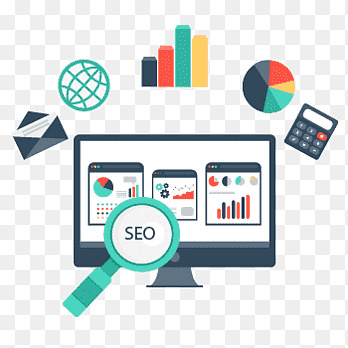
Introduction to SEO Services
In today’s digital age, having a strong online presence is essential for businesses to thrive. With millions of websites competing for attention, SEO services have emerged as a crucial tool for enhancing visibility, driving traffic, and maximizing online success.
<<Grab Your SEO Services Now>>
Understanding the Importance of SEO
Enhancing Online Visibility
SEO services are designed to improve a website’s visibility on search engine results pages (SERPs). By optimizing various aspects of a website, such as content, keywords, and metadata, SEO helps businesses rank higher in search engine rankings, making it easier for potential customers to find them online.
Driving Organic Traffic
One of the primary goals of SEO is to drive organic traffic to a website. Unlike paid advertising, which requires ongoing investment, organic traffic generated through SEO is sustainable and cost-effective. By targeting relevant keywords and optimizing content, SEO services attract users who are actively searching for products or services related to a business’s offerings.
<<Grab Your SEO Services Now>>
Boosting Website Authority
SEO services also play a crucial role in building and enhancing a website’s authority within its niche. By consistently producing high-quality content, earning backlinks from reputable sources, and optimizing technical elements, SEO helps establish trust and credibility with both users and search engines, leading to improved rankings and increased visibility.
Types of SEO Services
On-Page Optimization
On-page optimization involves optimizing individual web pages to improve their search engine rankings and attract more organic traffic. This includes optimizing content, meta tags, headings, images, and URLs to align with targeted keywords and improve user experience.
<<Grab Your SEO Services Now>>
Off-Page Optimization
Off-page optimization focuses on activities conducted outside of a website to improve its search engine rankings. This includes building backlinks from other reputable websites, engaging in social media marketing, and participating in online communities to increase brand visibility and authority.
Technical SEO
Technical SEO involves optimizing the technical aspects of a website to improve its crawlability, indexability, and overall performance in search engine rankings. This includes optimizing website speed, fixing broken links, implementing schema markup, and ensuring mobile-friendliness to enhance user experience and search engine visibility.
<<Grab Your SEO Services Now>>
Choosing the Right SEO Service Provider
Assessing Experience and Expertise
When selecting an SEO service provider, it’s essential to assess their experience and expertise in the field. Look for companies with a proven track record of delivering results for clients in your industry and inquire about their specific areas of expertise, such as local SEO, e-commerce SEO, or enterprise SEO.
Reviewing Client Testimonials
Client testimonials and case studies are valuable indicators of an SEO service provider’s reputation and reliability. Look for reviews from satisfied clients who have achieved tangible results, such as increased website traffic, higher search engine rankings, and improved conversion rates, as this demonstrates the company’s ability to deliver on its promises.
<<Grab Your SEO Services Now>>
Evaluating Pricing and Packages
While cost shouldn’t be the sole determining factor when choosing an SEO service provider, it’s essential to evaluate pricing and packages to ensure they align with your budget and business goals. Beware of companies offering unrealistically low prices, as they may cut corners or use unethical tactics that could harm your website’s long-term performance.
Benefits of Investing in SEO Services
Long-term Growth and Sustainability
Unlike paid advertising, which provides temporary results, SEO offers long-term growth and sustainability. By investing in SEO services, businesses can build a solid foundation for their online presence, attract targeted organic traffic, and achieve sustainable growth over time.
<<Grab Your SEO Services Now>>
Higher Conversion Rates
Studies have shown that organic search traffic tends to have higher conversion rates compared to other sources. By targeting relevant keywords and optimizing conversion paths, SEO services help businesses attract qualified leads and convert them into paying customers, ultimately driving revenue and ROI.
Competitive Advantage
In today’s competitive marketplace, having a strong SEO strategy can give businesses a significant competitive advantage. By outranking competitors in search engine results and attracting more organic traffic, businesses can solidify their position as industry leaders and capture a larger share of the market.
<<Grab Your SEO Services Now>>
Conclusion
In conclusion, SEO services are a fundamental component of any successful digital marketing strategy. By enhancing online visibility, driving organic traffic, and boosting website authority, SEO helps businesses attract more customers, increase revenue, and achieve long-term growth and sustainability in an increasingly competitive landscape.
<<Grab Your SEO Services Now>>
FAQs
1. How long does it take to see results from SEO services? — The timeline for seeing results from SEO services can vary depending on factors such as the competitiveness of your industry, the quality of your website, and the effectiveness of your SEO strategy. Generally, it can take several months to start seeing significant improvements in search engine rankings and organic traffic.
2. Are SEO services suitable for small businesses? — Yes, SEO services can be highly beneficial for small businesses looking to increase their online visibility, attract more customers, and compete effectively in their respective markets. Many SEO agencies offer customizable packages tailored to the needs and budgets of small businesses.
3. Can I perform SEO on my own, or do I need to hire a professional? — While it’s possible to perform basic SEO tasks on your own, such as optimizing content and building backlinks, achieving sustainable results often requires expertise and experience. Hiring a professional SEO service provider can ensure that your website receives the best possible optimization and delivers measurable results.
4. Is SEO a one-time investment, or does it require ongoing maintenance? — SEO is an ongoing process that requires continuous monitoring, optimization, and maintenance to ensure long-term success. Search engine algorithms are constantly evolving, and competitors are always striving to improve their rankings, making ongoing SEO efforts essential for maintaining and improving search visibility.
5. How can I measure the effectiveness of SEO services? — Key performance indicators (KPIs) such as organic traffic, search engine rankings, conversion rates, and ROI can help measure the effectiveness of SEO services. Regularly monitoring these metrics and analyzing trends over time can provide valuable insights into the impact of your SEO efforts on your business’s online performance.
3 notes
·
View notes
Text
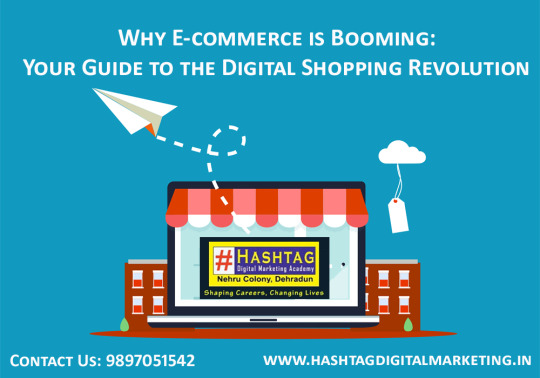
The way we shop has undergone a dramatic shift. Gone are the days of limited selection and geographical constraints. E-commerce has exploded in popularity, offering a world of convenience, choice, and competitive pricing at your fingertips. But what's driving this trend, and how can you be a part of it?
The Power of Digital Marketing:
E-commerce thrives on a strong digital presence. Here's where the magic of digital marketing comes in:
SEO (Search Engine Optimization): Ensure your online store ranks high in search results for relevant keywords. This drives organic traffic, attracting potential customers who are actively searching for products or services like yours.
PPC (Pay-Per-Click) Advertising: Utilize targeted ads on platforms like Facebook and Instagramto reach a wider audience interested in your offerings.
SMM (Social Media Marketing): Build a strong presence on social media platforms like YouTube (for video content), Facebook (for community building), and Instagram (for visually appealing products).
Creating a Captivating Online Experience:
Graphic Design&Video Editing: High-quality product images, infographics, and engaging videos are crucial for grabbing attention and showcasing your products effectively.
Website Development: A user-friendly, well-designed website is your online storefront. It should be easy to navigate, secure, and optimized for mobile devices.
E-commerce Business Models:
Drop Shipping: This low-risk approach allows you to sell products without holding inventory. You partner with a supplier who handles storage, packaging, and shipping while you focus on marketing and customer service.
Ready to Join the E-commerce Wave?
Whether you're a seasoned entrepreneur or just starting, the e-commerce world offers exciting opportunities. Here are some resources to help you get started:
Courses & Trainers: Numerous courses and trainers can equip you with the knowledge and skills you need to succeed in e-commerce.
Blog Posts & Articles: Stay informed about the latest trends and best practices by reading blogs and industry publications.
Contact Us today to discuss your e-commerce goals. We can help you develop a comprehensive digital marketing strategy and create a captivating online presence to drive sales and build a thriving online business. Visit our website to learn more about our product and services. E-commerce is a dynamic field. Stay updated, embrace creativity, and leverage the power of digital marketing to carve your niche in the ever-evolving world of online shopping and Launch Your Dream E-commerce Empire.
#digital marketing#digital marketing institute in dehradun#digital marketing course in dehradadun#marketing#student#dehradun#digital marketing course in dehraudn#digital marketing course#social media#college
5 notes
·
View notes